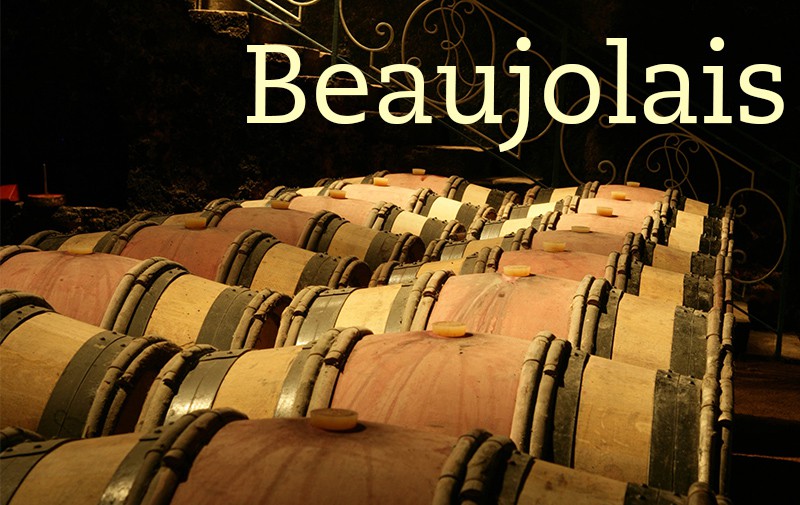
Just as there is Swiss cheese and there is Appenzeller, there is Beaujolais Nouveau and there is Beaujolais. If you want Beaujolais for your cheese anytime other than the third Thursday of November, when the markets are flooded with the Nouveau stuff, you might as well go hardcore, searching out those made with no added yeasts or any of the other interventions common to commercial Nouveau. David Lillie, who stocks an immense array of great Beaujolais at Chambers Street Wines in New York City, explains why: “In Beaujolais in particular, there’s an immense difference [between wines made with ambient yeasts versus cultured yeasts]. The cultured yeasts selected for [Nouveau] Beaujolais give the wine aromas of banana, exotic fruit—all these horrible, unusual aromas,” he says, shuddering.
Yet “banana” is so common to Beaujolais these days it’s often thought of as characteristic of Gamay, Beaujolais’s red wine grape, right alongside “bubble gum.” Great Gamay, however, needs no help from specially-cultured yeasts to be absolutely delicious: it has a buzzy tang of red raspberries, a whiff of roses, an herbal spice, a sometimes gamey meatiness, and a dancing acidity that holds all that aloft.
It also has a terrific ability to channel the earthy flavors of the particular patch of land it was grown on. In fact, within the 34-mile stretch along the Saône Valley in eastern France that is Beaujolais, there are ten different crus, areas that are officially recognized for wines with a particular personality and a quality that sets them apart from one another. Wines from Saint-Amour, for instance, tend to be among the region’s lightest, as they come from the farthest north; Chiroubles wines also tend to be delicate due to the area’s altitude. Moulin-à-Vent, on the other hand, turns out meaty, dark red wines due to its manganese-rich soils; Morgons are generally firm and minerally, and Brouilly wines can be almost brawny, as they come from the region’s southern end.
That, of course, is just the beginning when you’re dealing with producers working toward capturing the particular flavor that comes from the soil, aspect, local yeasts, and all the other details of a particular spot—which makes choosing a cheese a little more complicated than it initially appears. First, you need to determine what sort of Beaujolais you have. If it’s an incredibly fruity, juicy, light Beaujolais like the 2009 Chiroubles from Karim Vionnet that Lillie imports, then the simpler and sweeter the cheese, the better: think goat cheese salads and sandwiches (maybe slip a slice of salty ham in there, too) and sweet, nutty Alpine cheeses like Comté (Lillie’s spot-on recommendation, as well).
A leaner, light style, like the Domaine Christian Ducroux Régnié from the cooler 2010 vintage, has an angularity that plays up a creamy cheese like Camembert and matches it in subtlety. (This bottle was particularly fabulous with a smoosh of Moses Sleeper from Jasper Hill Farm, its tart, rose-toned berry flavors pirouetting across the supple fat and drawing out delicate herbal and floral notes from its milk.)
Meatier Beaujolais, with darker, berry flavors and a little mouth-sticking tannin, allow for a bit more punch: the funk and milky density of the Swiss Scharfe Maxx steamrolled the Régnié wine but met its match in a granite-firm, cool, and spicy Moulin-à-Vent from Domaine Diochon.
But Beaujolais isn’t the place to go too crazy: its high acid, especially in tandem with tannin, tends to ratchet up any acetic/goaty/sheepy/cheesy funk, knocking the combination off balance. Blues are really difficult. Even though Persillé du Beaujolais frequently pops up in cheese-matching charts as a “perfect” Beaujolais match, there wasn’t a blue I could find tame enough to work. In general, Beaujolais is cow’s milk cheese territory (fresh goat cheese a notable exception), especially dense, sweetly milky Alpine styles.
Before you start, chill the wines, whether light or brawny. You want them not ice cold, but a nice 55˚F to 60˚F, the temperature of a cool cellar. If they smell a little stinky at first, give them time in your glass, or dump the bottle into a pitcher to give it a little air. For reasons that remain mysterious to me, many low-intervention wines like Beaujolais (especially biodynamically produced ones) tend to take a while to show their full selves and last unusually well; a few of the bottles I picked up at Chambers, in fact, tasted better after three days than they did when first opened.
This, of course, is a terrific excuse to buy a gaggle of bottles and open them all at once, with an equal gaggle of cheeses; anything leftover can be sealed, refrigerated, and pulled out 30 minutes before serving the next night. However, be warned: while these wines are what I’d deem serious wines, in that they morph over the course of an evening or longer, revealing all sorts of delicious detail and fascinating complexities, they aren’t heavy wines. Gamay’s acidity keeps even the richest examples feeling frisky. And that makes it awfully easy to eat a lot of cheese.
The Wines
Clos de la Roilette 2010 Fleurie (13 percent, Louis/Dressner Selections, New York City)
Domaine Christian Ducroux 2010 Régnié (12 percent, Fruit of the Vine, Long Island City, N.Y., 718-392-5640)
Domaine Diochon 2009 Moulin-à-Vent Cuvée Vieilles Vignes (13 percent, Kermit Lynch Wine Merchant, Berkeley, Calif.)
Jean-Paul Brun 2009 Côte de Brouilly Terres Dorées (12.5 percent, Louis/Dressner Selections, New York City)
Karim Vionnet 2009 Chiroubles Vin de Kav (12.5 percent, Chambers Street Wines, New York City)
Louis-Claude Desvignes 2009 Morgon Javernières Climat Côte du Py
(13.5 percent, Louis/Dressner Selections, New York City)
The Cheeses
Fresh chèvre by Nettle Meadow
Moses Sleeper by Jasper Hill Farm
Tarentaise by Spring Brook Farm
Scharfe Maxx by Studer Dairy





